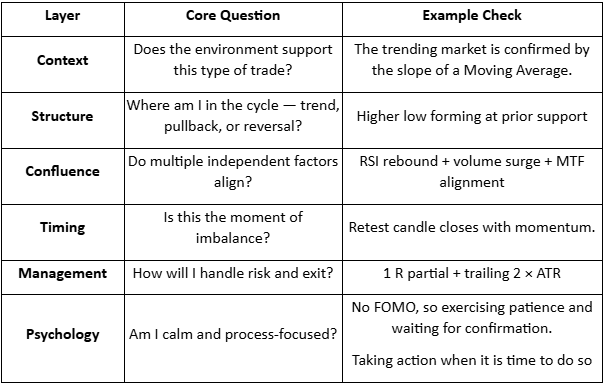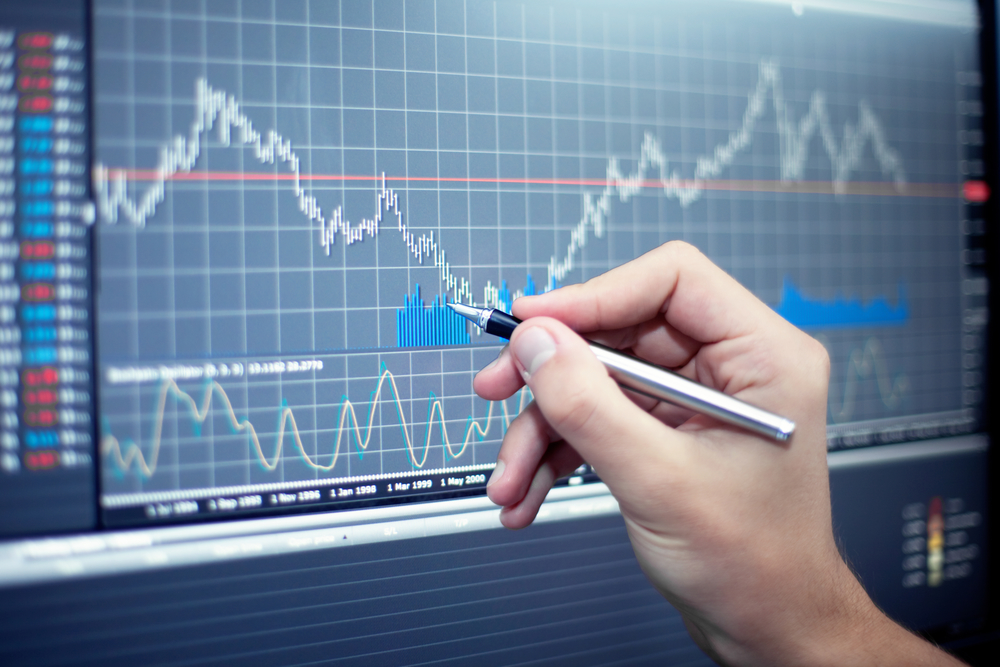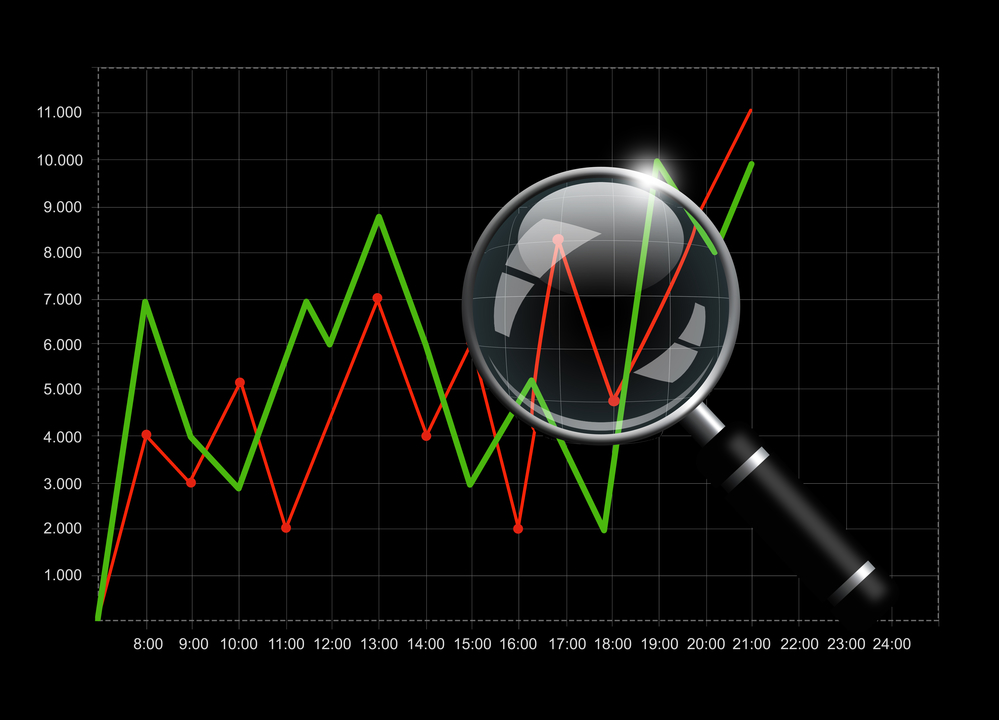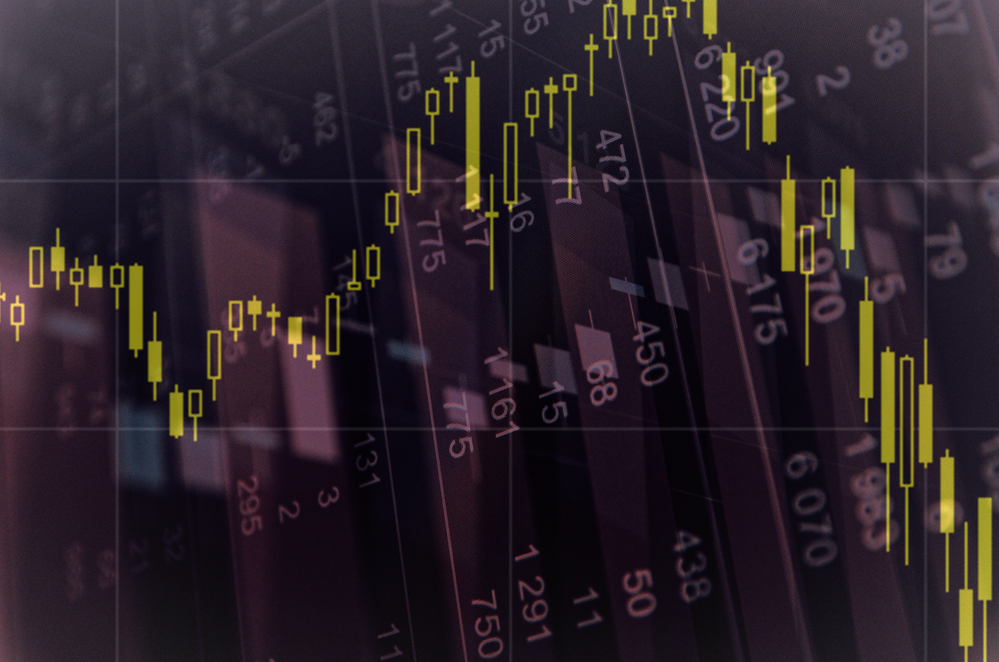Trading strategies
Explore practical techniques to help you plan, analyse and improve your trades.
Our library of trading strategy articles is designed to help you strengthen your market approach. Discover how different strategies can be applied across asset classes, and how to adapt to changing market conditions.

.jpg)
Every trader has had that moment where a seemingly perfect trade goes astray.
You see a clean chart on the screen, showing a textbook candle pattern; it seems as though the market planets have aligned, and so you enthusiastically jump into your trade.
But before you even have time to indulge in a little self-praise at a job well done, the market does the opposite of what you expected, and your stop loss is triggered.
This common scenario, which we have all unfortunately experienced, raises the question: What separates these “almost” trades from the truly higher-probability setups?
The State of Alignment
A high-probability setup isn’t necessarily a single signal or chart pattern. It is the coming together of several factors in a way that can potentially increase the likelihood of a successful trade.
When combined, six interconnected layers can come together to form the full “anatomy” of a higher-probability trading setup:
- Context
- Structure
- Confluence
- Timing
- Management
- Psychology
When more of these factors are in place, the greater the (potential) probability your trade will behave as expected.
Market Context
When we explore market context, we are looking at the underlying background conditions that may help some trading ideas thrive, and contribute to others failing.
Regime Awareness
Every trading strategy you choose to create has a natural set of market circumstances that could be an optimum trading environment for that particular trading approach.
For example:
- Trending regimes may favour momentum or breakout setups.
- Ranging regimes may suit mean-reversion or bounce systems.
- High-volatility regimes create opportunity but demand wider stops and quicker management.
Investing time considering the underlying market regime may help avoid the temptation to force a trending system into a sideways market.
Simply looking at the slope of a 50-period moving average or the width of a Bollinger Band can suggest what type of market is currently in play.
Sentiment Alignment
If risk sentiment shifts towards a specific (or a group) of related assets, the technical picture is more likely to change to match that.
For example, if the USD index is broadly strengthening as an underlying move, then looking for long trades in EURUSD setups may end up fighting headwinds.
Setting yourself some simple rules can help, as trading against a potential tidal wave of opposite price change in a related asset is not usually a strong foundation on which to base a trading decision.
Key Reference Zones
Context also means the location of the current price relative to levels or previous landmarks.
Some examples include:
- Weekly highs/lows
- Prior session ranges, e.g. the Asian high and low as we move into the European session
- Major “round” psychological numbers (e.g., 1.10, 1000)
A long trading setup into these areas of market importance may result in an overhead resistance, or a short trade into a potential area of support may reduce the probability of a continuation of that price move before the trade even starts.
Market Structure
Structure is the visual rhythm of price that you may see on the chart. It involves the sequences of trader impulses and corrections that end up defining the overall direction and the likelihood of continuation:
- Uptrend: Higher highs (HH) and higher lows (HL)
- Downtrend: Lower highs (LH) and lower lows (LL)
- Transition: Break in structure often followed by a retest of previous levels.
A pullback in an uptrend followed by renewed buying pressure over a previous price swing high point may well constitute a higher-probability buy than a random candle pattern in the middle of nowhere.
Compression and Expansion
Markets move through cycles of energy build-up and release. It is a reflection of the repositioning of asset holdings, subtle institutional accumulation, or a response to new information, and may all result in different, albeit temporary, broad price scenarios.
- Compression: Evidenced by a tightening range, declining ATR, smaller candles, and so suggesting a period of indecision or exhaustion of a previous price move,
- Expansion: Evidenced by a sudden breakout, larger candle bodies, and a volume spike, is suggestive of a move that is now underway.
A breakout that clears a liquidity zone often runs further, as ‘trapped’ traders may further fuel the move as they scramble to reposition.
A setup aligned with such liquidity flows may carry a higher probability than one trading directly into it.
Confluence
Confluence is the art of layering independent evidence to create a whole story. Think of it as a type of “market forensics” — each piece of confirmation evidence may offer a “better hand’ or further positive alignment for your idea.
There are three noteworthy types of confluence:
- Technical Confluence – Multiple technical tools agree with your trading idea:
- Moving average alignment (e.g., 20 EMA above 50 EMA) for a long trade
- A Fibonacci retracement level is lining up with a previously identified support level.
- Momentum is increasing on indicators such as the MACD.
- Multi-Timeframe Confluence – Where a lower timeframe setup is consistent with a higher timeframe trend. If you have alignment of breakout evidence across multiple timeframes, any move will often be strengthened by different traders trading on different timeframes, all jumping into new trades together.
3. Volume Confluence – Any directional move, if supported by increasing volume, suggests higher levels of market participation. Whereas falling volume may be indicative of a lesser market enthusiasm for a particular price move.
Confluence is not about clutter on your chart. Adding indicators, e.g., three oscillators showing the same thing, may make your chart look like a work of art, but it offers little to your trading decision-making and may dilute action clarity.
Think of it this way: Confluence comes from having different dimensions of evidence and seeing them align. Price, time, momentum, and participation (which is evidenced by volume) can all contribute.
Timing & Execution
An alignment in context and structure can still fail to produce a desired outcome if your timing is not as it should be. Execution is where higher probability traders may separate themselves from hopeful ones.
Entry Timing
- Confirmation: Wait for the candle to close beyond the structure or level. Avoid the temptation to try to jump in early on a premature breakout wick before the candle is mature.
- Retests: If the price has retested and respected a breakout level, it may filter out some false breaks that we will often see.
- Then act: Be patient for the setup to complete. Talking yourself out of a trade for the sake of just one more candle” confirmation may, over time, erode potential as you are repeatedly late into trades.
Session & Liquidity Windows
Markets breathe differently throughout the day as one session rolls into another. Each session's characteristics may suit different strategies.
For example:
- London Open: Often has a volatility surge; Range breaks may work well.
- New York Overlap: Often, we will see some continuation or reversal of morning trends.
- Asian Session: A quieter session where mean-reversion or range trading approaches may do well
Trade Management
Managing the position well after entry can turn probability into realised profit, or if mismanaged, can result in losses compounding or giving back unrealised profit to the market.
Pre-defined Invalidation
Asking yourself before entry: “What would the market have to do to prove me wrong?” could be an approach worth trying.
This facilitates stops to be placed logically rather than emotionally. If a trade idea moves against your original thinking, based on a change to a state of unalignment, then considering exit would seem logical.
Scaling & Partial Exits
High-probability trade entries will still benefit from dynamic exit approaches that may involve partial position closes and adaptive trailing of your initial stop.
Trader Psychology
One of the most important and overlooked components of a higher-probability setup is you.
It is you who makes the choices to adopt these practices, and you who must battle the common trading “demons” of fear, impatience, and distorted expectation.
Let's be real, higher-probability trades are less common than many may lead you to believe.
Many traders destroy their potential to develop any trading edge by taking frequent low-probability setups out of a desire to be “in the market.”
It can take strength to be inactive for periods of time and exercise that patience for every box to be ticked in your plan before acting.
Measure “You” performance
Each trade you take becomes data and can provide invaluable feedback. You can only make a judgment of a planned strategy if you have followed it to the letter.
Discipline in execution can be your greatest ally or enemy in determining whether you ultimately achieve positive trading outcomes.
Bringing It All Together – The Setup Blueprint

Final Thoughts
Higher-probability setups are not found but are constructed methodically.
A trader who understands the “higher-probability anatomy” is less likely to chase trades or feel the need to always be in the market. They will see merit in ticking all the right boxes and then taking decisive action when it is time to do so.
It is now up to you to review what you have in place now, identify gaps that may exist, and commit to taking action!


Invariably, the motivation to look at adding another technical indicator beyond that which you are already using, is a belief that your trading results, and the system that creates these, could be improved. As traders, we are bombarded with information relating to the use of technical indicators to guide decision making in our entry and exit decisions. Such information can be “persuasive” in making a change but as you are responsible for your trading decisions and subsequent results, it seems logical to start the process by asking the question “is it the right time for me to explore the use of another indicator?”.
The aim of this article is to highlight the FOUR critical questions you should ask of yourself first. 1. Am I REALLY trading my existing system NOW? As previously referenced, the major impetus for considering adding an indicator is to improve results when trading an existing system.
You can only make the judgement of any improvement if you both have a comprehensive system that specifies entry/exit/position sizing as a minimum AND are actually trading this. Potential trading actions The reality for most traders is that they fall down on one or both of these two CRUCIAL factors. Honesty with what you are doing now backed up with the evidence of journaling will give you the answer to this.
If these resonate with you, logically addressing these should be your priority. Without this, you are not able to make that judgement and hence adding another indicator is far less likely to impact positively on results. 2. Is adding another indicator the ONE major thing that is going to make the most difference to my trading results NOW or is there something else I should invest my energy on?
We have already specified two potential priorities in the previous point with reference to your trading plan and adherence to it. Also, we referenced the issue of evidence through journaling. As this is not only crucial for the above point, it is a vital part of your review process should you choose to investigate the use of a new indicator.
So again, could be viewed as a priority. Finally, addressing your knowledge relating to trading may be more important for you now. Not only are we referring to general trading learning but an in-depth understanding of what indicators including the ones you are using now, do and do not tell you about market sentiment.
This learning is again important in your judgement as to which NEW indicator could be useful. Therefore, again we would suggest this could be a priority over adding another indicator right now for you. Potential trading actions Prioritise your trading plan, discipline, journaling and learning, making sure these are at an appropriate level for you to invest time in exploring new indicators. 3.
Have I got absolute clarity about what another indicator should do to enhance my existing system? Previous points relating to journaling and learning should give you the ability to more ably identify what it is that a new indicator could add to your trading. The first decision in this process is to identify whether your focus is on improving entry or exit.
Once you have clarified this and If you have ticked other boxes so far, the other potential area for exploration is to look at the perimeters of the indicators/systems you are currently using as it may be that this could simply be the answer to create potentially better outcomes. For example, let’s assume you are using a price/10 EMA cross as an exit signal. You have found that one of the areas you wish to improve has not been taken out early on a regular basis by “market noise”.
It may be a simple case of testing a change e.g. to a price 20EMA cross that may make the difference you are seeking. Potential trading actions • Learn about the indicator you are using and make sure it is a fit for any gap you have identified in your existing system. • Don’t forget it may serve your purpose to look at a simple adjustment of perimeters of existing indicators you are using. This STILL needs testing before implementation. 4.
Have I got a formal process for testing an additional indicator in place that will produce the evidence to decide whether to include it within your trading plan? Ok so you have got this far, and so are ready to look at your new indicator. So briefly here are three process components you need to have in place. i.
Perform a back-test on previous trades to determine any change in dollar outcome across a critical mass of trades, Remember the purpose of any back-test is to justify the need for a forward or prospective test, NOT to change your system at this point. ii. Perform a prospective test (again deciding what critical mass of trades are enough on which to make a judgement) on a demo account using the indicator as you intend to do so in live trading. This may not only reinforce information from your back-test but adds the reality of new data coming into the market live and the tests the trades you may not have taken (if your previous entry indicators would have blocked action).
It is important that you keep ALL other trading plan perimeters the same to be able to confirm that it is your new indicator that is making any difference observed. iii. If your test produces a positive outcome, then articulate within your trading plan how you are going to use your new indicator. It is important that you ensure any statements are sufficiently specific (see an article on this HERE ) to guide action and measurement, and this should include under what market circumstances you would use it. iv.
Set a review date (e.g. 3 months) to determine how beneficial its continued use has been. Potential trading actions Ensure your process is not only clear but one you adhere to. You may use the above as a start point to developing you on process but remember to specify how many trades YOU think is a critical mass on which to make decisions.
We trust this has been useful and as always please feel free to ask questions of our team or email to [email protected] with your comments.


Position accumulation is to increase exposure to a currency pair, by adding a second (or more) position in the same trading direction. Although on the surface the opportunity to increase potential return is attractive, there are also risks that MUST be at the forefront of your thinking. These principles described in this article are appropriate for Share, Index and Commodity CFDs as well as obviously Forex positions.
Are you ready to accumulate? Before considering position accumulation to your trading behaviour, it is worth considering two important aspects: This is not a strategy for the beginner trader, but rather when other systems are already in place such as a written trading plan that includes statements that reference risk management approaches, particularly that of appropriate position sizing and clear exit approaches. Also, logically, as you are potentially increasing exposure with this approach, it is not only having a trading plan that is important, but also a record of follow through with that plan.
We know disciplined trading is a challenge for some, so if this is something you are battling with then master this first. Why a profitable position only? It is crucial that this is one of the rules of any system you choose to develop.
Accumulating into a losing position (akin to ‘dollar cost averaging)’ should be considered a very high-risk strategy. The essence of this approach is that at each accumulation point, as you increase exposure, you manage the additional risk by moving a stop on previous positions at each accumulation point. Your position accumulation system checklist As with any aspect of trading behaviour, a measurable set of statements that dictate your actions as part of your trading plan should be developed with reference to your position accumulation.
These statements should be specific, unambiguous and measurable to facilitate consistency in action and allow you to make judgements as to whether any refinements could be made subsequent to a review of a critical mass of such trades. These may include as a minimum: Under what market circumstances you would consider accumulating e,g. strong uptrend confirmed across multiple timeframes. What technical signals are you going to use to signal the time to accumulate (e.g. if into a long position, break of a key price point, subsequent to confirmation of continued uptrend after a retracement or the next technical resistance).
Your trail-stop process e.g. at each accumulation point for all previously opened positions -all opened positions should be treated as one re. your revised exit points as a trade goes in our direction. Position sizing e.g. accumulate no more than the original position, meaning if you enter 5 mini-lots initially that is the maximum you can add on each accumulation. Remember as you are trailing the initial stop of all accumulated positions you are risk managing through this method.
Your maximum exposure i.e. your total standard lots/contracts you are prepared to enter, e.g. if you accumulate 1 index CFD contract on each occasion how many times are you prepared to do this. Remember, as different instruments are positioned differently in terms of exposure you will have to specify this for each. It would be a nonsense to enter 1 Share CFD contract but may be appropriate to enter 1 gold CFD contract.
Other exit points or reason to delay/refrain from accumulating further e.g. economic data due. Once your system is complete then it should be tested prospectively, and amended as appropriate, prior to implanting in the reality of your trading practice. We trust this review of position accumulating will help in your choice as to whether to integrate this into your trading and of course, some of the considerations that are worth exploring and articulating within your plan.


By Mike Smith Let’s face it, trading can be a lonely occupation sometimes. Along with the hope of picking up a “hot tip”, this seems to be a key reason why trading forums are so popular. Unfortunately many people leave such forums almost as quick as they join them, simply because many users are not particularly supportive and often seem to be fuelled by ego-driven posting.
So, understanding that there are benefits from connecting with other traders, another option we’ve seen in action is to take on a trading buddy. This might be someone you know who has shown an interest in your battle against the markets, and they need not be the same level of experience as yourself. Indeed, it may be that they are only just beginning.
But that shared experience can create a difference. We’ve possibly identified THREE significant positives, and how trading buddies can not only increase your level of enjoyment when trading, but also reduce that “alone” feeling, and even potentially impact positively on results. Consider: 1.
Increased Accountability The very fact you have someone close that you can share your experiences with gives a layer of accountability that you will never get when you are trading without someone else knowing what you are doing. It’s easy to stray from whatever your trading “straight and narrow” is when no one is there to know. Logically, if you are sharing your experience of trades, those that go with you and those that don’t, there is one more reason to trade more consistently with your plan.
Beyond direct trading, there’s also the follow through in learning and system development that can be positively impacted upon by having someone else around. Recognising the potential benefits of this layer of accountability is why many traders seek out a coach and invest thousands of dollars in such. 2. Shared learning and experiences The benefit is based on the idea that “Two heads are better than one”.
Whether it be a theoretical trading concept, understanding and testing a trading indicator that you are considering using, or simply having someone on hand to encourage and support you, or even celebrate when things go well, a trading buddy can positively impact all of these. 3. More efficient and effective trading system development One of the critical tasks you face as a trader is to develop the systems that support your trading decision making. A staggering number of traders have no or incomplete trading plans, and no other systems in place that many believe are necessary.
Additionally, there’s the obvious benefit of measuring the success or otherwise of such systems and having a critical mass of trades as evidence that system changes may be useful. Developing and testing systems together and getting evidence more quickly with two people working on getting that critical mass of trades are definite positives for having a trading buddy. Making your trading buddy happen a.
Get one There are more advantages to having someone local (although much can be done online) who you can physically meet. This can not only be more enjoyable but more productive. Ideally, someone you already know and whose opinions you generally trust would seem logical.
Experience is less important than the above as we can help (see below) in bringing someone up to speed. Watch also for LIVE events happening across Australia we are running this year. One of the key objectives of these is to facilitate networking with other trades.
Also, check out Inner Circle if you are not already a member. Perhaps put the word out you are interested in having a trading buddy and see if anyone is interested. b. Get them trained If your prospective buddy is someone who has simply expressed interest in trading but not yet taken the plunge, point them in the direction of “First Steps”, our free education course.
It is designed for new traders and enables fast track learning. Get them up and running with a demo platform and of course ultimately a live trading account. If this is of interest, then connect with us ASAP and visit the FREE education page on the website.
If they already trade, get them involved in “Next Steps” and “Inner Circle” as appropriate, and direct them to the page on the website. c. Set some ground rules Any relationship needs them! It doesn’t have to be a formal session, just a simple ‘how can we both make this work’ conversation.
Documenting what you’re doing and writing plans for action can always help get the most out of it for both of you. We see some great potential advantages for you and your buddy and, of course, will facilitate that relationship through education and support as much as we can. Your next step is to consider whether the advantages we have discussed would be right for you and of course if they are, take action.


Volatility Revisited Volatility is a measure of the range of price movement over a defined period on a specific timeframe on which any calculation is performed. It may increase or decrease dependent on market conditions and aims to provide the trader with an indication as to whether the range price movement in subsequent candles/bar is likely to be large or small. Of course, as with the majority of indicators it is a lagging measure, in that it is calculated on previous candles and therefore this should be recognised by the individual trader when considering incorporating it into their own decision-making processes relating to entry and exit.
One of the most used volatility indicators is the Average True Range (ATR), and we have discussed this previously both in past articles and Inner Circle webinars sessions. As the basis of its calculation, it uses (as a default setting) the last 14 bars of price ranges and plots an average of this on a chart. Common uses include (along with other potential criteria): Setting of risk management stop Potential ‘trail stop’ and ‘profit taking’ strategies Use in “breakout” entry strategies Current Market Volatility A combination of concerns re. the continuing spread of Coronavirus and Oil pricing wars over the last fortnight, have created prolonged volatility levels not seen since the Global Financial Crisis (GFC) in 2008.
Although the root causes are dramatically different, price ranges have definite similarities. Such volatility can be seen across all time-frames and across all financial instruments, as market sentiment is flung one way and then the other, as continuing updates hit the newswires. To give context here are a few examples (using the ATR) comparing 10th March with the previous month: Potential Considerations for your Trading One of the first lessons that it is important to recognise as traders is that, we are trading “risk”.
It is price changes that create opportunity to profit and loss account capital. Appropriate management of this is CRITICAL in all trading situations, irrespective of market volatility. There is no doubt however that higher (and increasing) volatility means that the likelihood of a significant price move away from the current price of any instrument is increased in a shorter period of time than would be considered in the market norm (as illustrated by the figure in the table above).
As an individual investor, as part of your chosen risk management, there are some potential considerations that this heightened volatility that may be worth examining. ( Note: We are not aiming to be predictive rather, offer suggestion as to questions you could ask of your current trading actions). Should I be trading at all in current market conditions? As current market movements are fundamentally headline-driven and there is far less predictability than for example general economic data releases about the timing of such headlines hitting the newswires, does this merit reviewing the time-frames you would normally consider?
If you are not currently using a volatility indicator (such as an ATR) as part of your decision making, is it worth reviewing your criteria for entry/exit to incorporate this? Remembering that volatility is NOT considered to be a predictor of price direction to the entry or exit criteria you use. Do I reduce the tolerable risk limit I apply to any trade i.e. review the % of account capital you are prepared to risk on any trade (e.g. reduce from 2% to 1%)?
If you are using ATR for decision making re. breakouts, should you consider a review of how you are using this e.g. if you normally use a price close to 0.5 ATR above a resistance as part of your reason for entry into a long trade, would 1xATR above reduce the chances of “false breakouts”? There are three things we want you to take away from this article: The recognition that extraordinary market circumstances may merit a review as to how you may normally trade (including potentially giving yourself permission to step back from trading) and be in no doubt that these circumstances ARE extraordinary. As always, the trading choices you make mean that YOU are responsible for your trading results not the market irrespective of underlying market conditions.
Make copious journal records of what is happening and what you are doing. There will be times in the future when similar market conditions occur. As the majority of you, we are guessing and keen to view your trading as something you can do for a lifetime, treat this as an invaluable learning opportunity for what may work (or otherwise) for you next time it happens.


Chart patterns (e.g. head and shoulders, triangles, double bottoms/tops), are commonly used to assist in trading decision making. If using these as part of your entry approach, their use should be viewed as a specific strategy, amongst others you may use, and so merit a dedicated section within your plan. This article outlines some of the key things to consider when writing and using such in your trading plan.
General rules with trading plans revisited The statements within your trading plan serve two primary functions, as discussed in detail in previous articles. It is important that such statements are specific enough to more effectively perform these functions, namely: a. Facilitate consistency in trading action e.g. in the entry and exit of trades, allowing the trader, and b.
Enable measurement e.g. within a journal, to make an evidence-based judgement on how well these statements are serving you through testing. With this level specificity, it is easier to ‘tweak’ components rather than throwing the “baby” of any strategy “out with the bathwater”. Often, many experienced traders discover the finer details can make a relatively big difference to trading results, rather than massive changes in approach.
Obviously, if there is a lack of consistency, originating from behaviours that move away from what you have planned, make it almost impossible to make any judgement on the success, or otherwise, of a strategy. Using chart patterns adheres to all the above. What about trading chart patterns?
Chart patterns are simply a representation of potential changes in market sentiment. Often combined with other indicators and can be used to indicate a potential entry into, or in some cases exit from, a specific position. Some patterns indicate a trend reversal (e.g. head and shoulder, double tops, triple bottoms etc), others a pause (congestion) before continuing in the direction of a previous trend e.g. flags, pennants, symmetrical triangles.
Patterns may occur on any timeframe but generally speaking are more robust (in terms of potential longevity of movement) on longer timeframes (although of course they cannot indicate with any accuracy how long that move may be). As with any entry approach, there is a chance that a trading idea based on an identified pattern will fail and so, as always, appropriate risk management should be put in place And within your trading plan? Chart patterns are not easily identifiable with most general indicator systems and are often best “sighted” so there is an element of subjectivity.
Logically this could suggest that this makes it even more vital to be robust in your description of how to use these in your trading. We have identified FIVE potential components to include within your written trading plan. These are: 1.
Your definition of the chart patterns you are going to use 2. When you are going to use them 3. Identification of when a pattern is completed 4.
Other factors you may use to potentially decrease the chance of a false breakout from any chart pattern you are going to use 5. Your initial stop placement method #1 Your definition of the chart patterns you are going to use Specify which of the chart patterns you are choosing to trade. Ideally, a description of what this pattern looks like on a chart will help lock this in.
For example, if we were to describe a double top it could read: • Reversal of upwards trend. • Creation of two upwards prongs. Around the same price level forming a ‘M-shape’. • Breakout below the ‘confirmation point’ (bottom of “prongs” confirms reversal. #2 When you are going to use them There are two perhaps obvious, and yet important, factors to include: a. On which timeframes you are going to use chart patterns b.
The proximity of impending economic data releases. For example, If trading a 30 minute chart you could specify “no relevant (define this e.g. specific to currency pair, sector of share CFD), significant (define this e.g. you may decide to actually state the data points) data due within the next 3 hours. #3 Identification of when a pattern is completed Experienced traders always wait until a pattern is complete before acting. However, the incidence of false breakouts (i.e. when a trading idea fails after a pattern is completed) is worth taking steps to attempt to limit.
Let’s use the break of a neckline on a ‘reverse head and shoulders’ as an example. Clearly, price moving upwards through the neckline is the desire. However, you need to articulate what are you using to determine this.
E.g. At any time within a candle period or on candle close price; and/or is there a specific distance such as using 0.5 ATR, or perhaps number of pips/points, above the neckline? #4 Other factors you may use to potentially decrease the chance of a false breakout from any chart pattern you are going to use The following may be considered: a. Which other indicators e.g. moving average, volume b.
Intra-candle price action e.g. close within the top third of the candle if considering a long trade. c. Agreement on other timeframes (although this may not be the pattern what constitute “agreement” e.g. price above 10EMA. d. Minimum distance to next “key price point” e.g. next resistance price level if going long. #5 Your initial stop placement method As the structure of each pattern is different then it is important to specific your initial stop placement methods for each.
So, to use the previous example, if trading the “idea” of a breakthrough a neckline, a pre-planned exit logically could be move back through that neckline may indicate a trade failure and necessitate a risk management exit (and so of course be a determining factor in your position sizing into that trade). As with defining what constitutes a breakout, logically again, you need to specify whether you are using an anytime touch of a price for exit or a candle period close price, and/or is there a specific distance (an how you are going to articulate this) below the neckline. So now to action… Depending on where you are now with you plan there are two potential actions. 1.
If you are already using chart patterns use the above checklist to determine whether you have these components included, fill any gaps and that ensure they are specific enough 2. If you have not got part of your trading plan them this may help you get started in making it happen Remember of course, the above is indicative suggestions only, it is YOU that must make the choice about what to include/not include and the specific parameters you are going to test and ultimately use.


In previous articles we have discussed in detail the merits of a trading journal in offering evidence for both: a. How well you are following a trading plan? b. How well your trading system is serving you? (assuming you are already following a trading plan) We have also outlined the importance of “closing the circle” and making sure you review journal data and action plan to make any amendments that would be of benefit.
If you are in the position that you have “jumped in” and made a trading a journal a reality in your trading, next level journaling aims to increase the quality of information, where you can optimise those things you are doing well and work on those things that need improvement. This, in essence, is all to do with asking the right questions of the information you have, so you can continue to make evidence-based judgements as to what type of trading suits you best. The reality is that no two traders are the same (even if using a similar system).
Your challenge is to find YOUR best approach that works for YOU. And subsequently, mirror this on an ongoing basis. Here are THREE potentially “game-changing” questions you could ask of your journal data which may give clues about “best fit” behaviour for you as an individual. #1 Which trading direction works for me?
There is no doubt that some traders have results that seem to be better going “long” and others trading “short”. The other possible outcome, of course, is that it doesn’t matter, and you perform equally as well irrespective of direction. Measuring the results of long versus short trades will give you this answer.
Let’s assume there is a noticeable difference. After obtaining this evidence your choices are twofold. The root cause of this may either be: a.
You have a simple aptitude for trading in a specific direction and so can mirror this with all future trading. b. It may be that your system works well for going in one direction and needs adjustment with the other. In this case, provided you are not comfortable sticking to (a) above then of course you have the evidence to refine that part of your system that appears to require adjustment. #2 Which timeframe works for me?
Similarly, we can look at whether specific timeframes work better for you as an individual trader. Questions about optimum timeframes are some of the most frequent that we receive on both ‘Inner Circle’ and the ‘First Steps courses. We have written about this topic before, the conclusion being that it is your individual circumstances that are most likely to dictate which timeframe works best for you.
Again, the power of a journal is that you can easily come to an answer, and so mirror that going forward (of course, this is dependent on you recording this as part of your journal process). #3 Which trading vehicle suits my trading style? Many of you reading this may be trading multiple vehicles e.g. Forex, Index CFDs, Share CFDs, commodities, options.
There are obvious differences not only in how these various instruments are priced but also influencing factors on how they move. Using a similar approach to the above, you can easily identify which vehicles are working for you. As with exploring trading direction the reason for this could be your characteristics as a trade or the robustness of your system in trading different vehicles.
So, the choices are the same - you can allocate a larger proportion (or even all) of your capital into trading the vehicle that produces better results or of course review and tweak the system for those vehicles with less desirable results. OK, so these are your three starting questions, that may help you find a trading style that is best fit for you. However, before we finish, it is worth offering a couple of additional pieces of guidance when doing an exercise such as this. a.
You need a critical mass of trades to make the data meaningful. (there is little evidence that can be gained from a couple of trades in any category). There is no definitive number to what this may be but logically perhaps 15-20 will suffice in the first instance. b. Compare like with like.
To make things meaningful you need to reduce the number of actors that may skew your results. As a start point it would make sense to: i. remove any trades where you clearly didn’t follow your plan, ii. Unless analysing #3 above it would seem logical to compare within one trading vehicle e.g. just your forex trades.
Finally, we would love to hear your feedback on journaling and how it has/has not worked for you (or even problems) you have had getting started. Drop a line a [email protected] with any feedback you would like to share.

